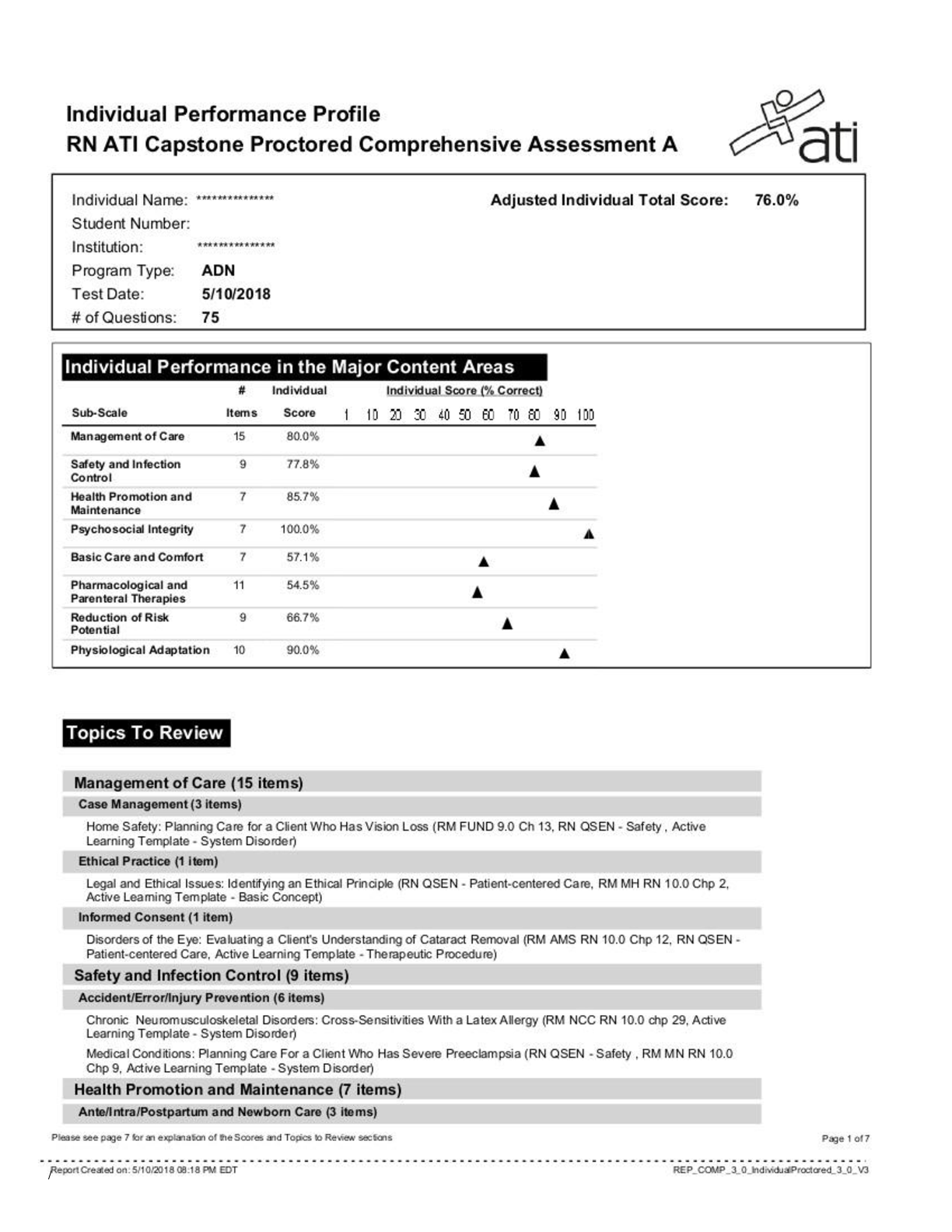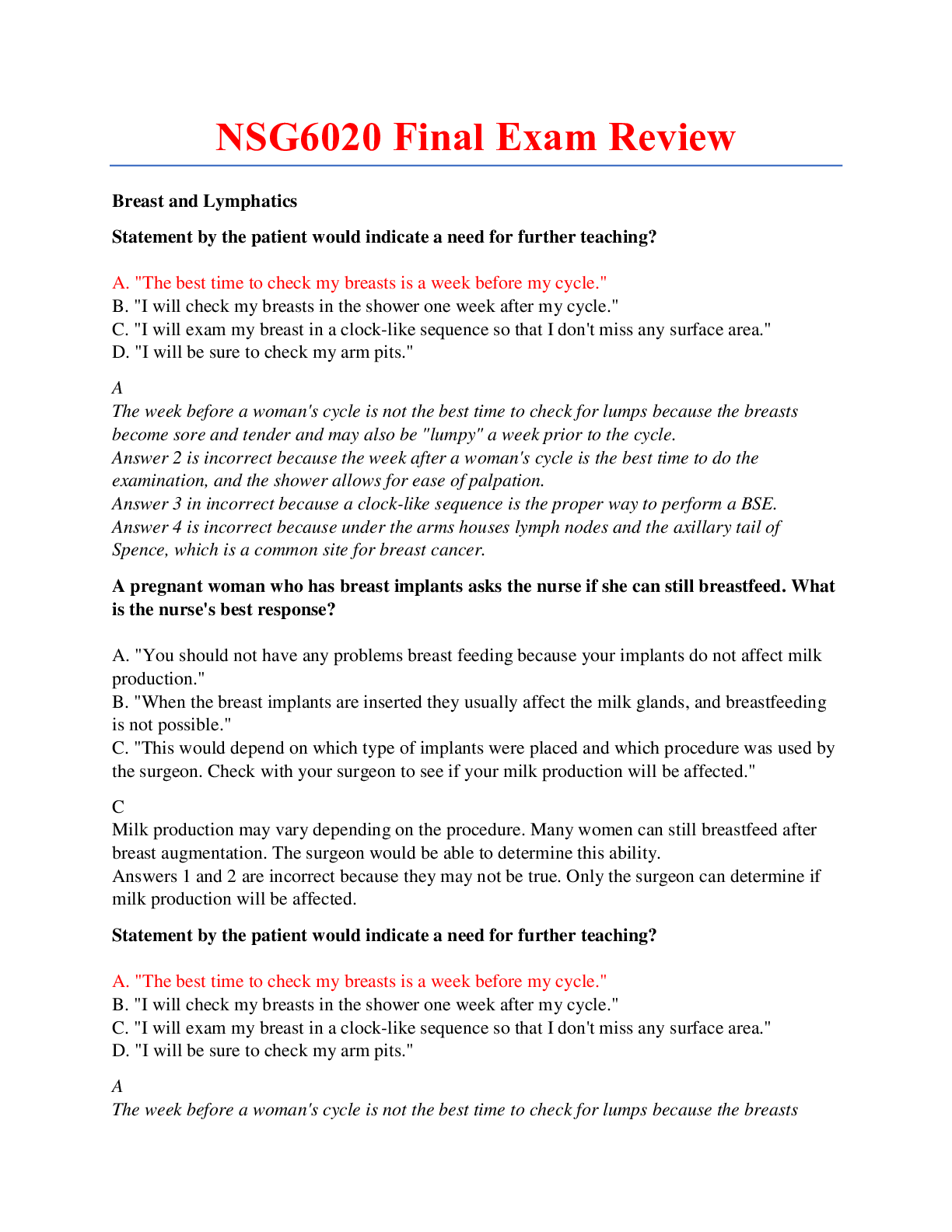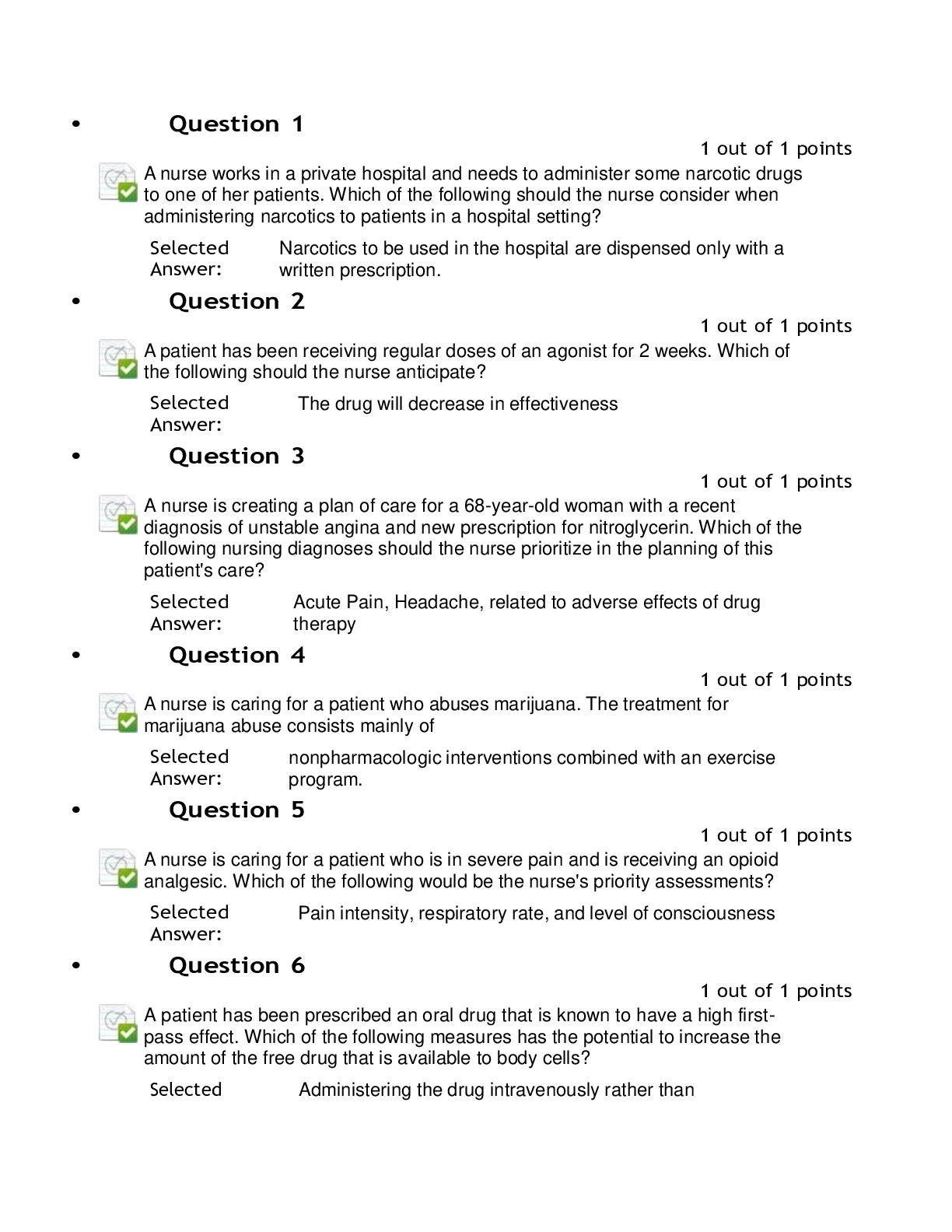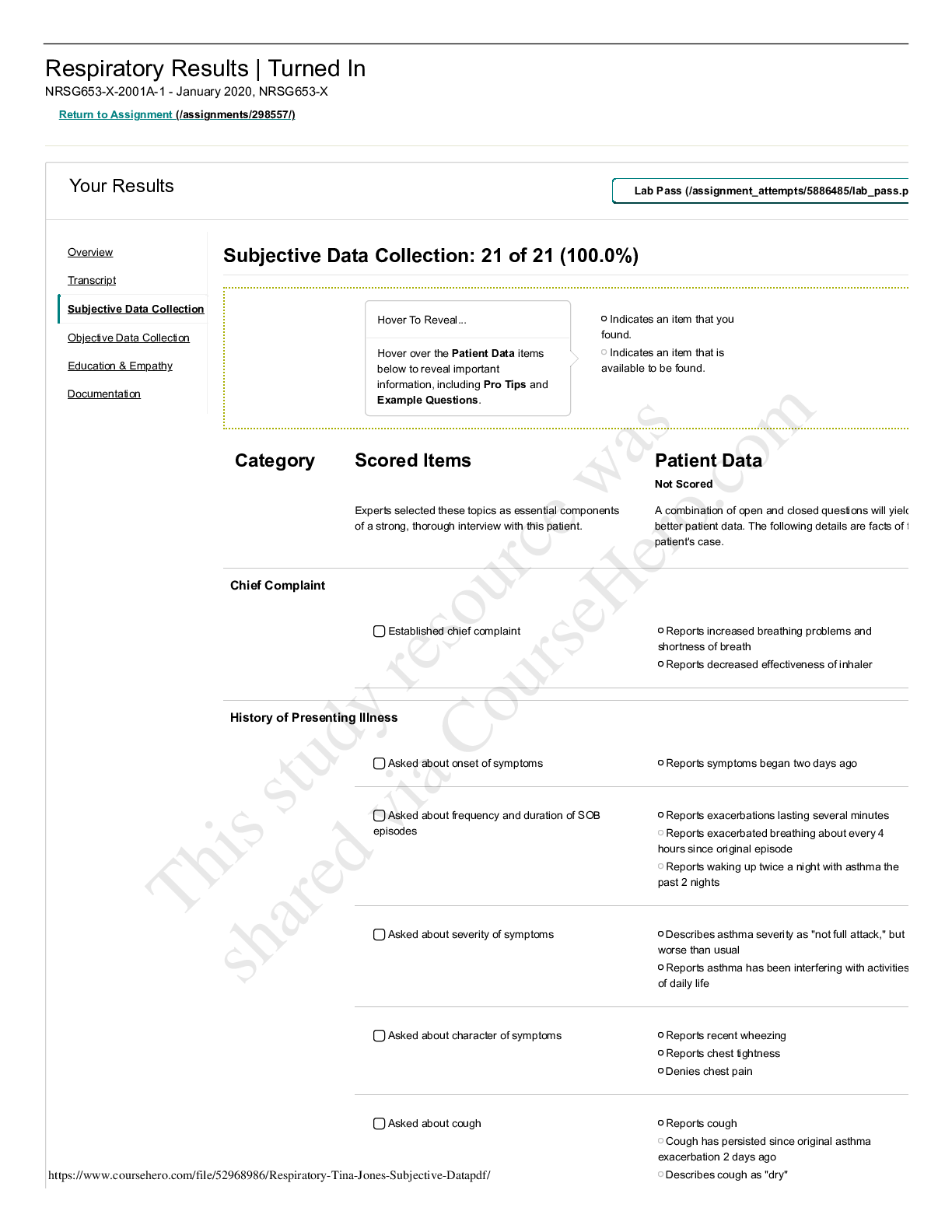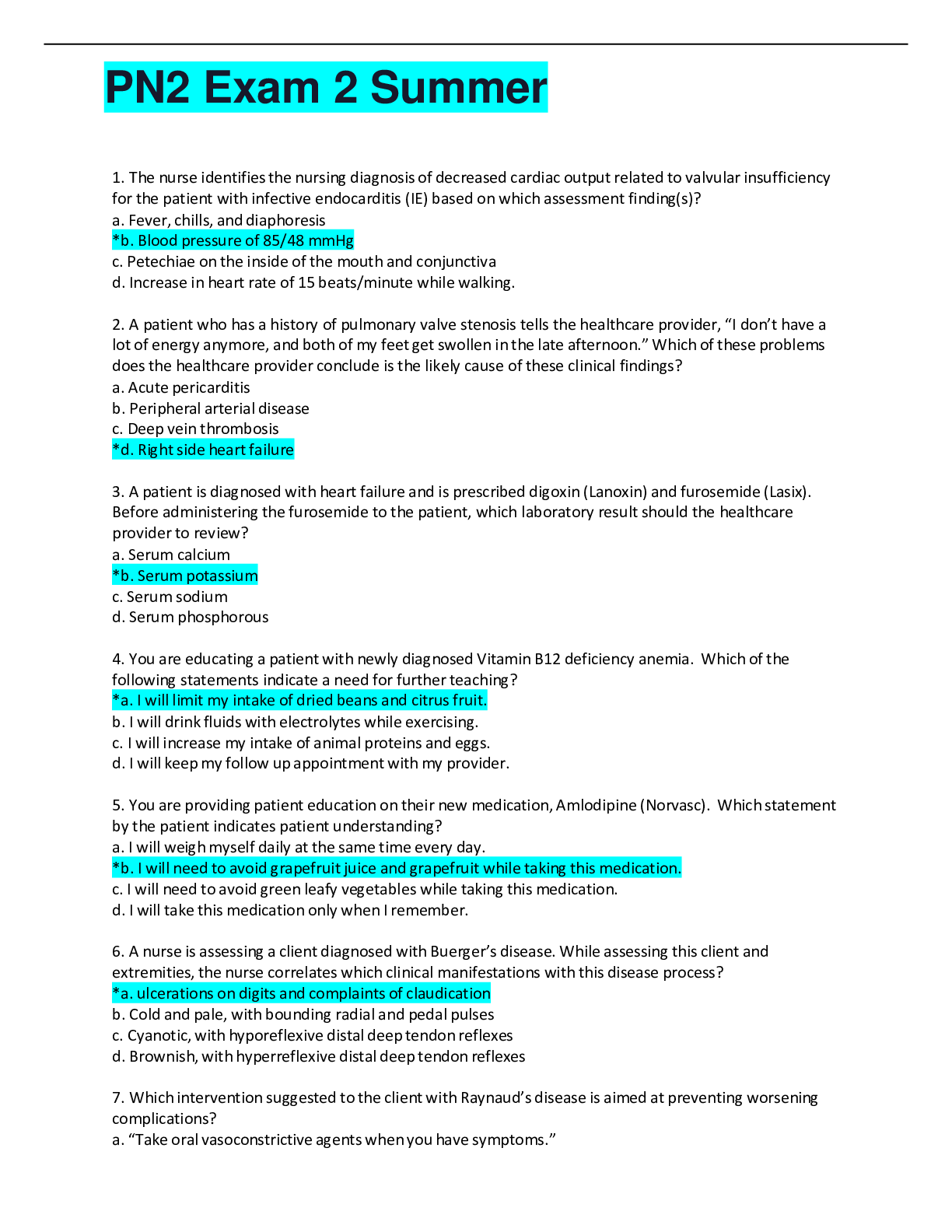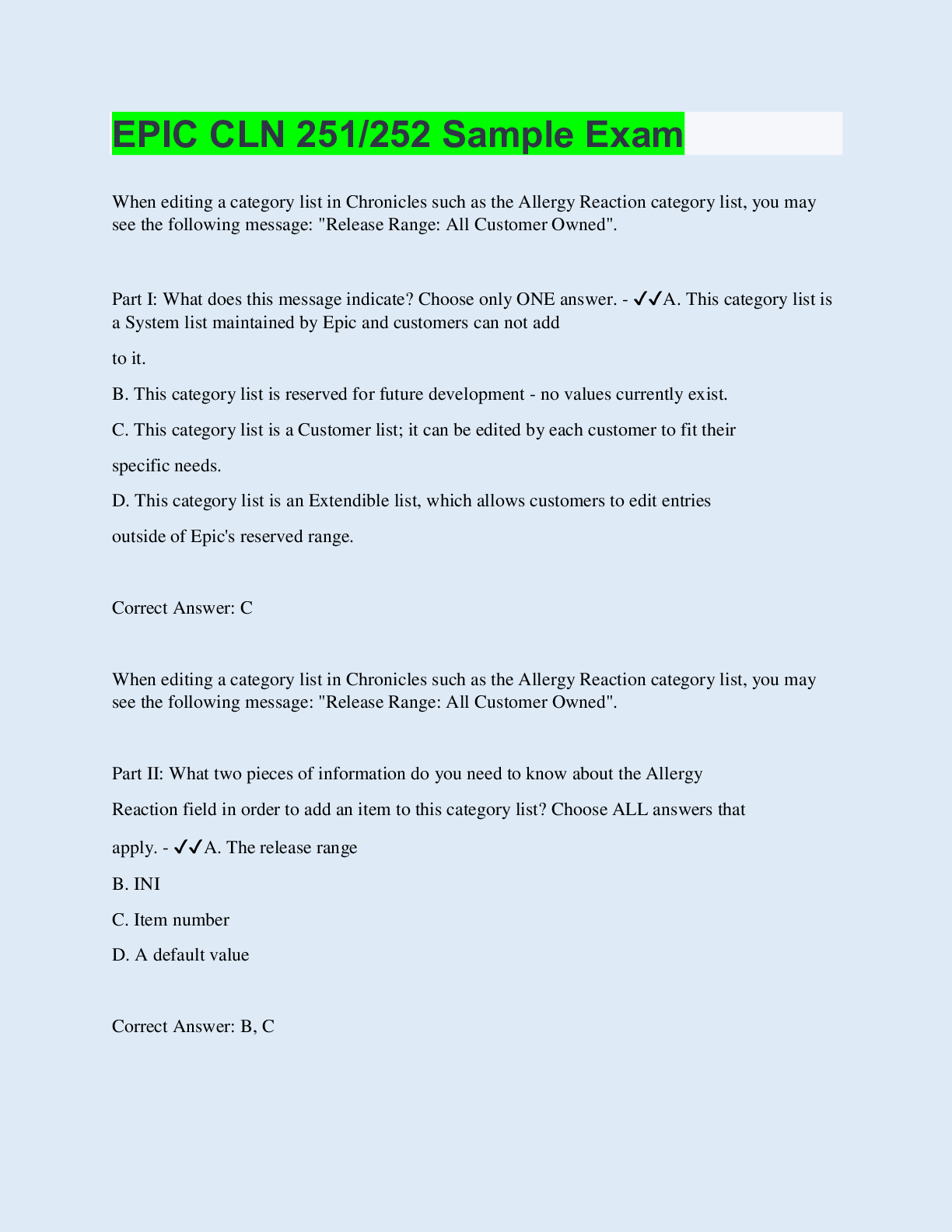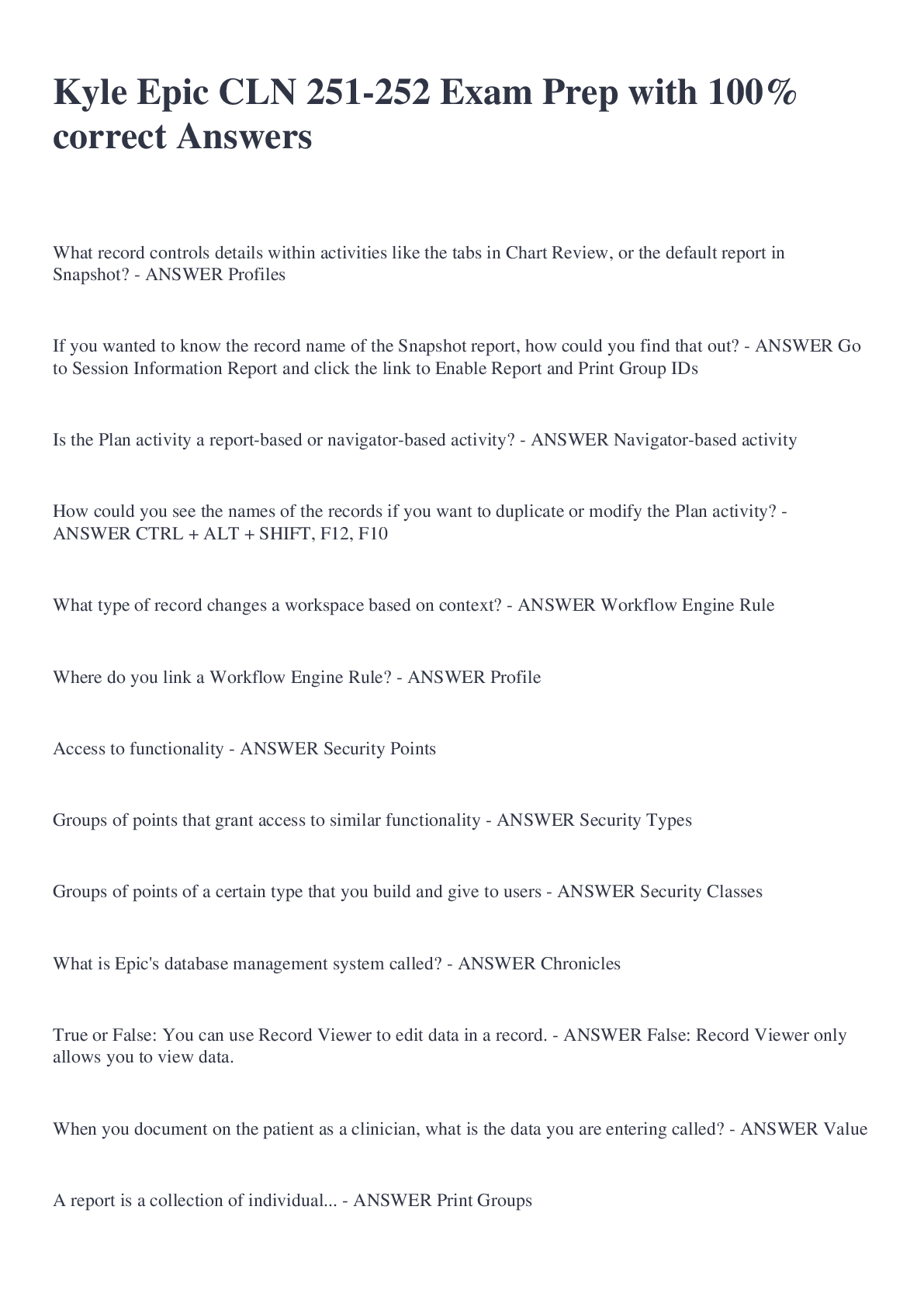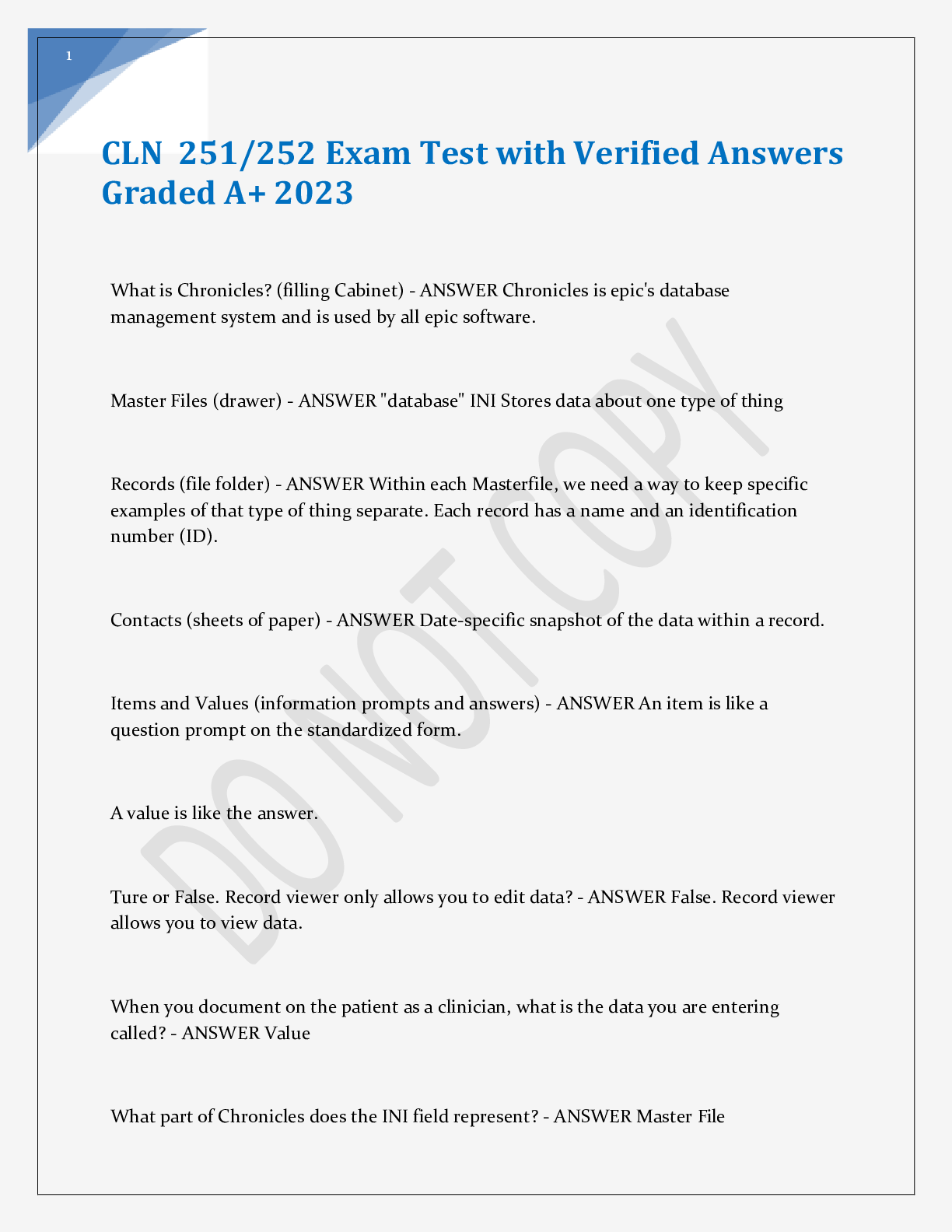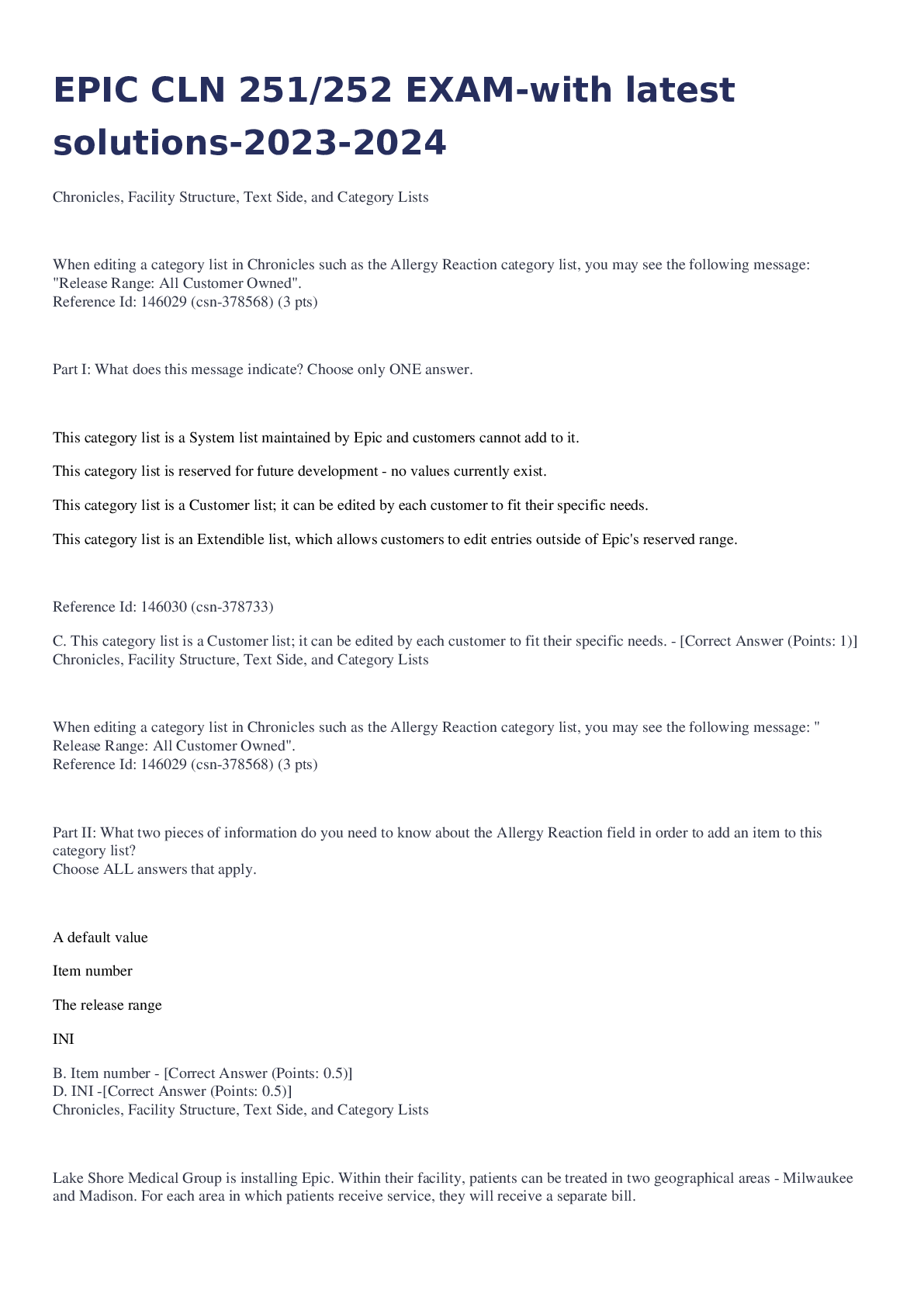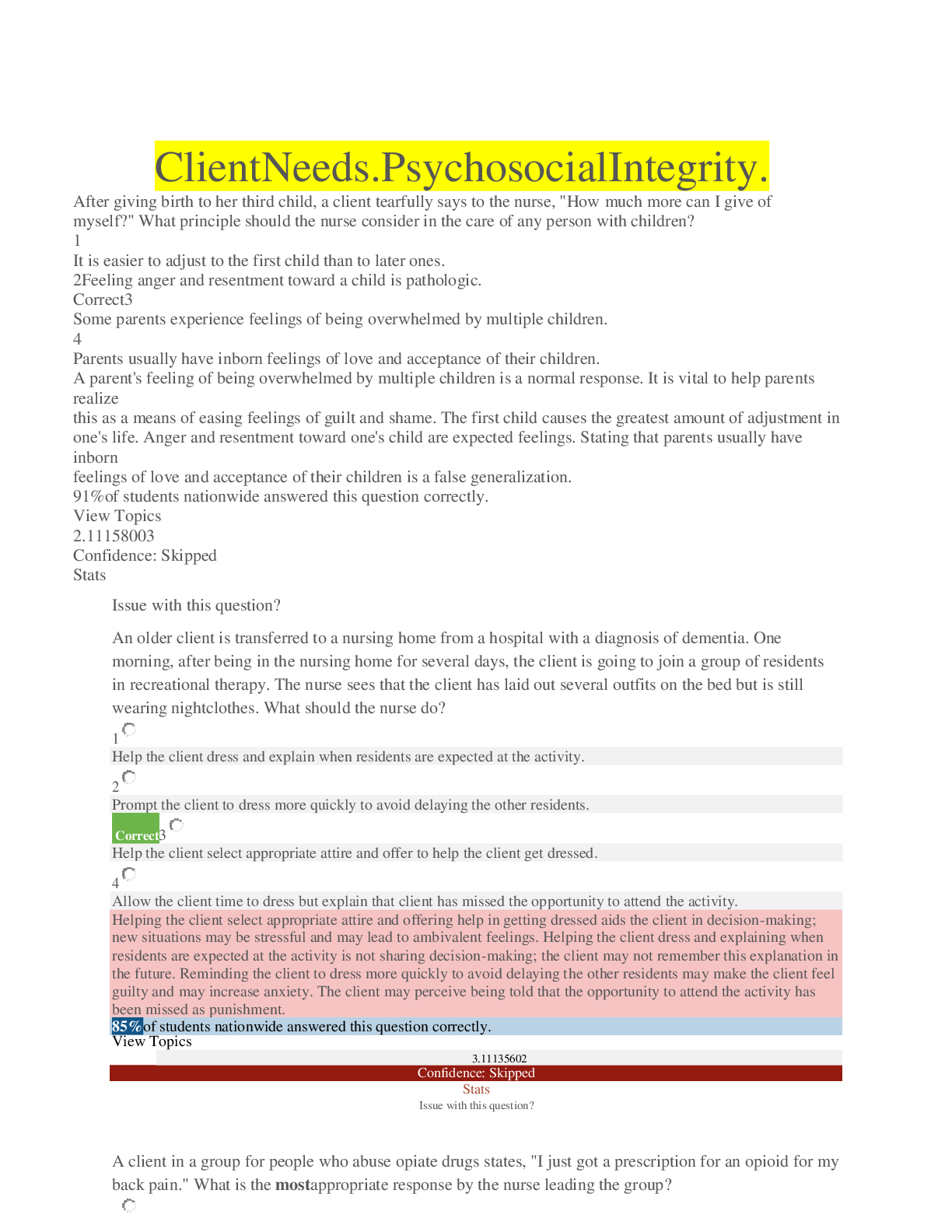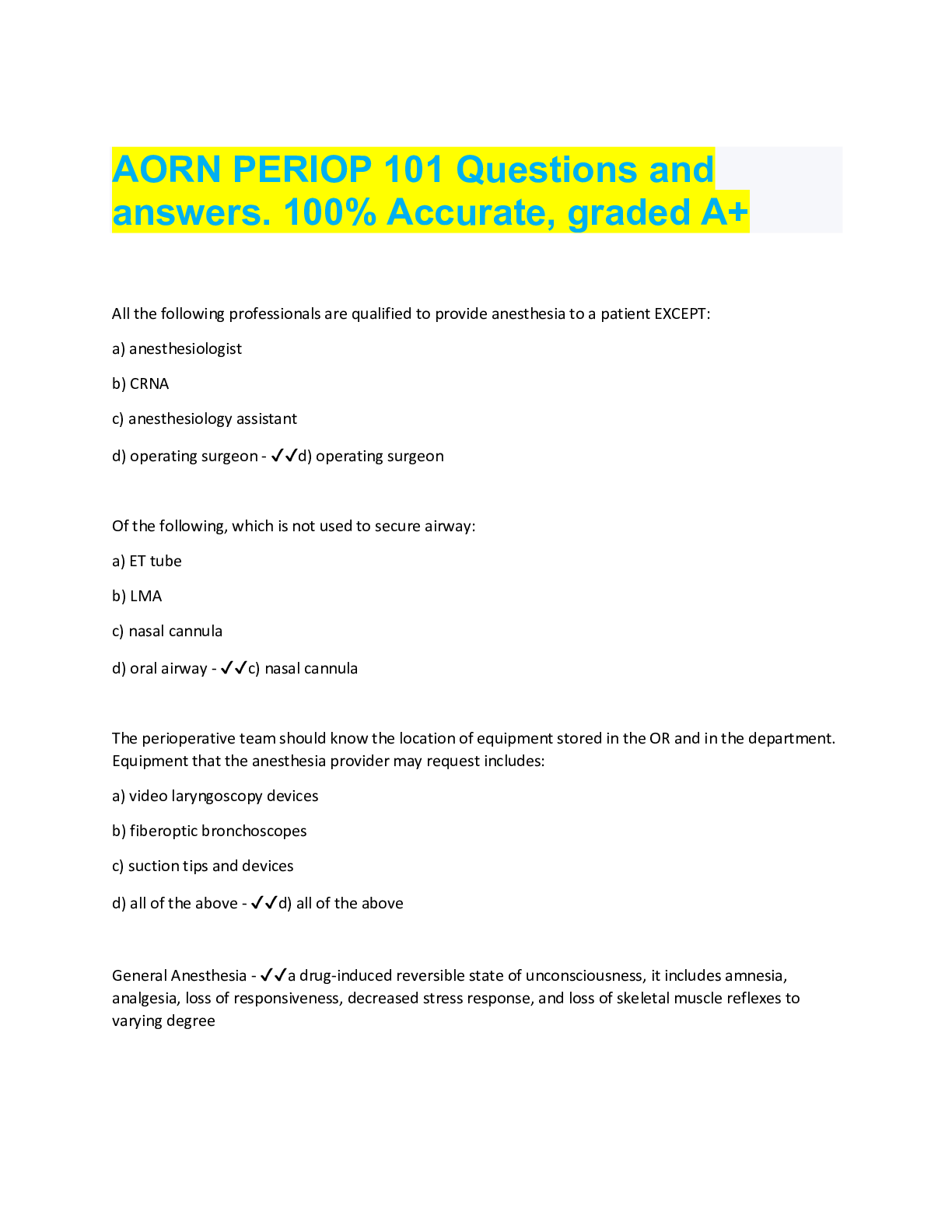NURS-6512N-31,Advanced Health
Document Content and Description Below
NURS-6512N-31,Advanced Health During initial ABCDE assessments of life-threatening conditions, D (disability) in neurologic status is assessed by the patient's: a. pupil size. b. degree of respon... siveness. c. nuchal rigidity. d. mood and affect. REF: p. 634 You have gone by ambulance to a construction site where an adult male is lying on the street. The only information you have is that he fell three stories. His neck is immobilized with sacks of concrete mix on either side. Your first action should be to determine: a. airway patency. b. bleeding sites. c. cranial nerve function. d. limb position. REF: p. 633 The ABCs of a primary survey would be interrupted to: a. complete the assessment record. b. manage life-threatening conditions. c. reassess the patient's temperature. d. transport the patient via airlift. REF: p. 635 The term status epilepticus is defined as: a. convulsive activity uncontrolled by medication. b. nonconvulsive brain wave disturbance, with psychomotor dysfunction. c. protracted convulsions with unresponsiveness lasting up to 1 hour. d. seizures that result in hypotension, pallor, and prolonged diaphoresis. REF: p. 644 Pulsus paradoxus greater than 20 mm Hg, tachycardia greater than 130 beats/min, and increasing dyspnea are signs of: a. intracranial pressure. b. pulmonary hypertension. c. status asthmaticus. d. tetanic contractions. REF: p. 644 The Cushing triad includes: a. tachycardia. b. irregular respirations. c. tachypnea. d. constricted pupils. REF: p. 643 Blood, vomitus, and foreign bodies are removed from the oropharynx of the unconscious patient by: a. stimulating the cough reflex. b. using a sweeping motion with the finger. c. performing a back thrust. d. using suction REF: p. 632 While performing the primary survey on a trauma victim, the patient is answering your questions. You may assume that during the time of the questioning: a. his airway is open. b. he is alert and oriented. c. no head injury has occurred. d. there is no respiratory compromise. REF: p. 632 If trauma above the clavicle is suspected, it is important to: a. test range of motion of the neck. b. remove any headgear. c. arrange for neck extension x-ray studies. d. stabilize the neck in a neutral position. REF: p. 632 Paradoxical chest movement suggests a: a. spontaneous pneumothorax. b. flail chest. c. clavicle fracture. d. pulmonary contusion. REF: p. 633 Respiratory distress may be evidenced by: a. retractions of accessory muscles. b. bradycardia. c. flushed skin. d. decreased capillary refill time. REF: p. 633 On palpating the chest wall of a trauma patient, you feel subcutaneous crepitus (emphysema), which is a sign that: a. air has leaked into soft tissue. b. a fracture underlies the injury. c. a foreign body is present. d. there is vascular obstruction. REF: p. 632 Clear or amber drainage from the nose or ears of a blunt trauma patient may indicate: a. epiglottitis. b. a retropharyngeal abscess. c. a basilar skull fracture. d. a perforated tympanic membrane. REF: p. 635 Delayed capillary refill may alert you to: a. hypovolemic shock. b. moderate hypoxemia. c. subnormal intracranial pressure. d. upper respiratory infection. REF: p. 643 Capillary refill can be assessed by applying pressure over a nail bed or a(n): a. bony prominence. b. eyelid. c. mucous membrane. d. femoral vein. REF: p. 634 The secondary survey of a patient with hypotension would begin with the assessment of: a. blood type. b. level of consciousness. c. number of fractures. d. swallowing ability. REF: p. 635 You would complete a Glasgow Coma Scale rating during the: a. health history. b. physical examination. c. primary survey. d. secondary survey. REF: p. 636 a. multisystem trauma. b. orbital fractures. c. basilar skull fractures. d. subdural hematoma. REF: p. 636 A life-threatening condition is recognized with the assessment of: a. pain with downward pressure on both anterior superior iliac spines. b. guarding and intense pain with deep palpation of the abdomen. c. distant and muffled heart sounds, with distended neck veins. d. severe throbbing pain in one eye, with photophobia. REF: p. 636 The application of blunt sternal pressure is used to detect: a. a fracture of attached ribs. b. the motor function of the T7 dermatome. c. pneumothorax. d. cardiac contusion. REF: p. 635 Until they are stabilized, trauma patients require reevaluation: a. every 2 minutes. b. every 5 minutes. c. every 10 minutes. d. every hour. REF: p. 636 During injury assessment, one of the most crucial historical components is: a. number of siblings. b. history of prior fractures. c. mechanism of injury. d. past and current occupational exposure REF: p. 635 Which condition manifests as unexplained shortness of breath (SOB) and cough with hemoptysis? a. Bleeding ulcer b. Myocardial infarction c. Pulmonary embolism d. Transient ischemia REF: p. 644 Which injury is the most common precipitator of blunt trauma? a. Age-related falls b. Motor vehicle accidents c. Work-related injuries d. Childhood play injuries REF: p. 637 When calculating the force of impact of a penetrating object, use: a. the size of the missile and size of the patient. b. the time of the incident and depth of the wound. c. the amount of blood loss and level of consciousness. d. the velocity of the missile and distance from the source. REF: p. 637 Adults and children display different physiologic responses to injury and acute illness. An important concept to remember when assessing infants and children is that they: a. experience lethal arrhythmias first, progressing to respiratory failure. b. usually experience cardiac arrest before respiratory failure. c. usually experience respiratory arrest before circulatory failure. d. tolerate greater volume changes, with less severe consequences. REF: p. 638 The approximate expected systolic blood pressure for a child older than 1 year is: a. 120 + child's age in years. b. 80 + child's age in years. c. 120 - child's age in years. d. 80 + (2 × the child's age in years). REF: p. 638 In life-threatening emergencies, consent for treatment: a. is obtained before treatment to protect the facility from liability. b. is not necessary. c. occurs after treatment is administered. d. is not valid because the patient is not competent. REF: p. 641 A patient whose spleen is ruptured will show a positive ________ sign. a. Battle b. Gower c. Grey Turner d. Kehr REF: p. 636 In the primary survey of your trauma patient, you discover a bluish discoloration in the periumbilical area. You will chart this as a _________ sign. . REF: p. 636 Opens eyes to verbal stimuli, verbally responds with inappropriate words, and localizes pain? 11 10 9 12 11 Opens eyes to verbal stimuli = 3 verbally responds with inappropriate words = 3 localizes pain = 5 REF 634 Differentiate between primary and secondary survey assessments. AVPU Primary survey Level of responsiveness REF 634 Differentiate between primary and secondary survey assessments. Abbreviated head to toe Secondary survey REF 635 Differentiate between primary and secondary survey assessments. Environmental Control Primary survey Differentiate between primary and secondary survey assessments. AMPLE Secondary survey Information relevant to the emergency condition REF 635 You are in the car rider line at your child's school when a mother rushes to your car with a toddler where you are concerned for respiratory distress. What signs do you look for? all of the above nasal flaring chest retractions RR > 60 all of the above [Show More]
Last updated: 1 year ago
Preview 1 out of 17 pages
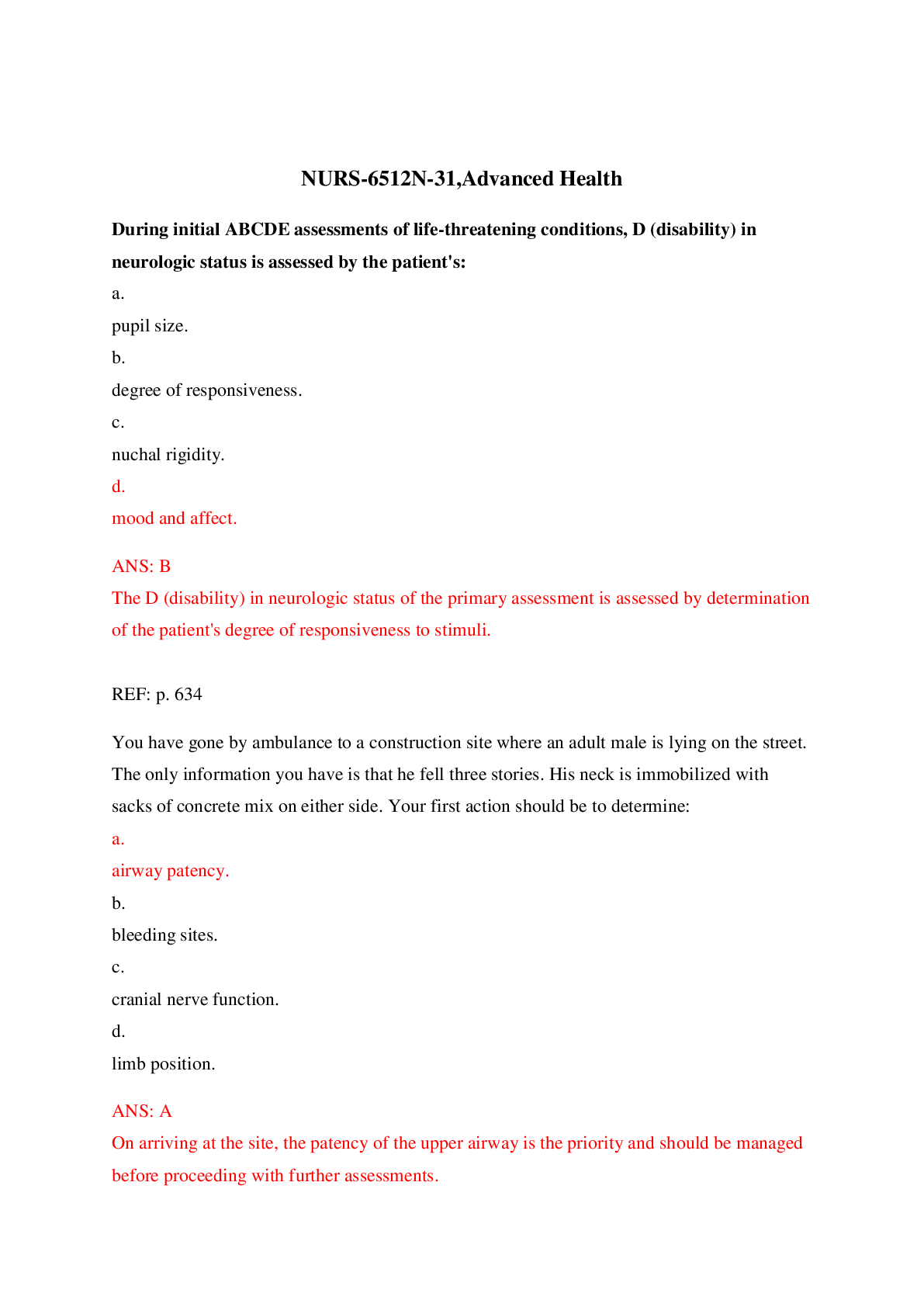
Reviews( 0 )
Document information
Connected school, study & course
About the document
Uploaded On
Aug 09, 2019
Number of pages
17
Written in
Additional information
This document has been written for:
Uploaded
Aug 09, 2019
Downloads
1
Views
115


